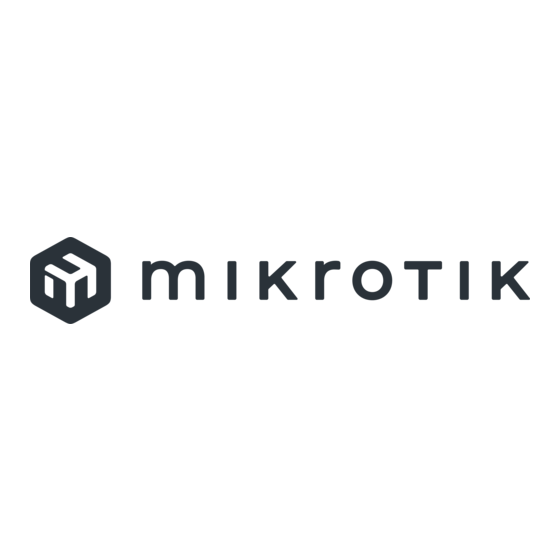Advertisement
RouterBOARD 411AR
Quick Setup Guide and Warranty Information
Assembling the Hardware
First use of the board:
●
Insert the MiniPCI card. RouterBOARD 411AR provides one MiniPCI slot on the top of the board
●
Connect antenna cables to the MiniPCI card and/or to the built in WiFI card's MMCX connector
●
Install the board in a case and connect other peripherals and cables.
●
Plug in power cable to turn on the board.
Powering
The board accepts powering from either the power jack or the LAN1 Ethernet port:
●
direct-input power jack J7 (5.5mm outside and 2mm inside diameter, female, pin positive plug) accepts 9..28V DC
(overvoltage protection starts at 28V).
●
LAN1 Ethernet port J8 accepts 9..28V DC input (at the board; higher voltage needed to compensate for power loss on
long cables; at least 18V suggested) from non-standard (passive) Power over Ethernet injectors (no power over
datalines). The board does not work with IEEE802.3af compliant 48V power injectors.
The maximum output of the power supply available for extension cards is normally 10W (3.0A).
Booting process
First, RouterBOOT is started. It displays some useful information on the onboard RS232C asynchronous serial port. The serial
port is set by default to 115200bit/s, 8 data bits, 1 stop bit, no parity . Note that the device does not fully implement the
hardware (RTS/CTS) flow control, so it is suggested to try to disable hardware flow control in the terminal emulation
program in case the serial console does not work as expected, and if it does not help, make a new cable using the pinout
given in the User's manual. The loader may be configured to boot the system from the onboard NAND, and/or from network.
See the respective section of User's manual on how to configure booting sequence and other BIOS parameters.
http://wiki.mikrotik.com/wiki/First_time_startup
DHCP or BOOTP (configurable in loader) protocols allow the RouterBOARD 411AR device to get an initial IP address, and
provide the address of a TFTP server to download an ELF boot image from. It is especially useful for software installation.
See the User's manual for more information and protocol details. Note that you must connect the RouterBOARD you want to
boot and the BOOTP/DHCP and TFTP servers to the same broadcast domain (i.e., there must not be any routers between
them – they must be on the same Ethernet switch).
4Gon www.4Gon.co.uk info@4gon.co.uk Tel: +44 (0)1245 808295 Fax: +44 (0)1245 808299
rev. B (23-Apr-2010)
Advertisement
Table of Contents

Summary of Contents for MikroTik RouterBOARD 411AR
- Page 1 DHCP or BOOTP (configurable in loader) protocols allow the RouterBOARD 411AR device to get an initial IP address, and provide the address of a TFTP server to download an ELF boot image from. It is especially useful for software installation.
- Page 2 If you have purchased your product from a MikroTik Reseller, please contact the Reseller company regarding all warranty and repair issues, the following instructions apply ONLY if you purchased your equipment directly from MikroTik Latvia To return failed unit or units to MikroTikls you must perform the following RMA (Return Material Authorization) procedure.




Need help?
Do you have a question about the RouterBOARD 411AR and is the answer not in the manual?
Questions and answers